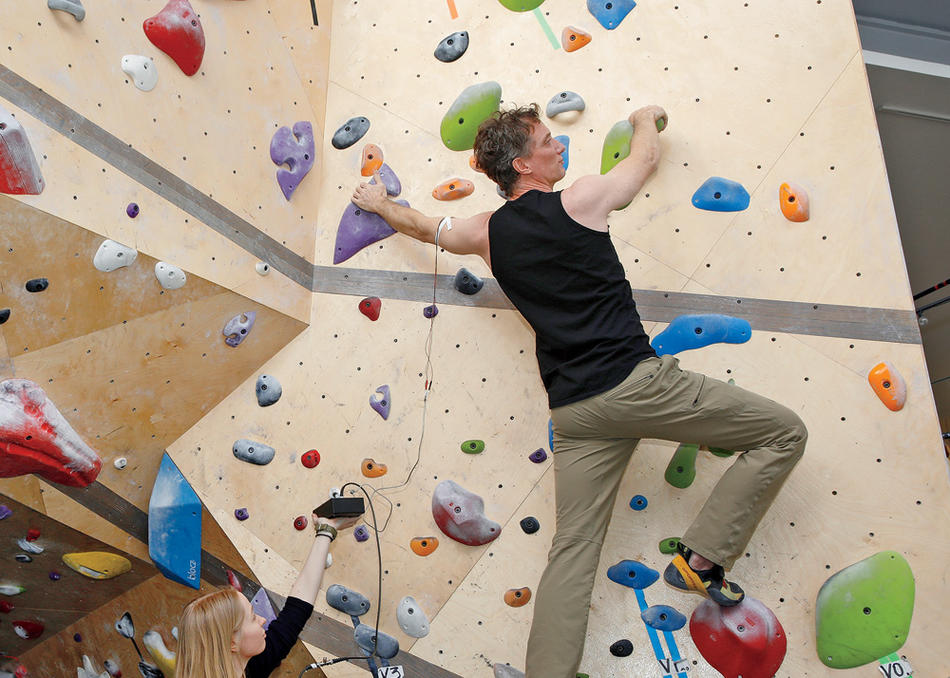Mark Churchland, a neuroscientist at Columbia’s Zuckerman Institute, studies how the brain’s motor cortex generates the neural activity behind voluntary movements, which is a handy vocation when your favorite pastime is rock climbing. Churchland’s preferred genre is bouldering: scaling boulders and indoor rock walls. He got hooked on climbing when he was a doctoral student at Stanford, and after he came to Columbia in 2012 he hit the quartzite cliffs of the Shawangunk Mountains, near New Paltz. So imagine his elation when the ground-floor commercial space in the Jerome L. Greene Science Center in Manhattanville, where Churchland conducts his research, was leased to the Steep Rock West gym, which built a big, bulging, arcing, fourteen-foot-high rock-climbing wall.
The wall is a modernist canvas spattered with oddly shaped plastic grips, or “holds,” of blue, orange, pink, yellow, and green. These are arranged, by color and difficulty, in zigzagging vertical courses, or “problems,” upon which boulderers must fasten their bodies and minds.
“In bouldering, the idea is that you do short routes, not so high that the fall will kill you,” says Churchland as he stands near the wall on a recent Friday. “They’re a little puzzle. How do I arrange my body to make this work?” A few feet away, climbers are affixed to the wall in various splayed or knotted attitudes of planning or perplexity, and there is the occasional thump of gravity’s handiwork upon the well-padded floor. “There’s no rope and the moves can be very difficult,” says Churchland. “They’re meant to be practiced again and again.”
Twice this academic year, Churchland has given demonstrations for local schoolchildren in the gym as part of the Saturday Science series run out of the Zuckerman Institute. Using an electromyography (EMG) machine to record the electrical signals sent from the brain to the muscles, Churchland demonstrates, almost counterintuitively, that good climbing technique leads to a decrease of electricity in the muscles. “Climbing uses relatively small muscles, and they tire pretty quickly,” Churchland says. “So whenever you can, you should support your body through your skeleton rather than having to generate force with your muscles.”
Churchland calls climbing, which will make its Olympic debut in Tokyo next year, a “surprisingly nerdy sport,” and names famous climbers who have been academics, like the neuroscientist Louis Reichardt, the first American to reach the top of both Mount Everest and K2, the two highest peaks in the world. “A very logical mind is helpful,” Churchland explains. “In ball sports you need to be able to react quickly and not get your frontal cortex too involved: don’t overthink or else you’ll fumble. Climbing’s sort of the opposite.”
A college-age man in sweats and a T-shirt stops to chat with Churchland about foot positioning and the best way to break in a pair of climbing shoes. Advice in climbing is called “beta,” since it’s a step removed from direct experience.
Churchland has a few smart suggestions. In this gym, at this wall, the climbing neuroscientist is the alpha of beta givers.
This article appears in the Spring 2019 print edition with the title "Mind Over Muscle."



